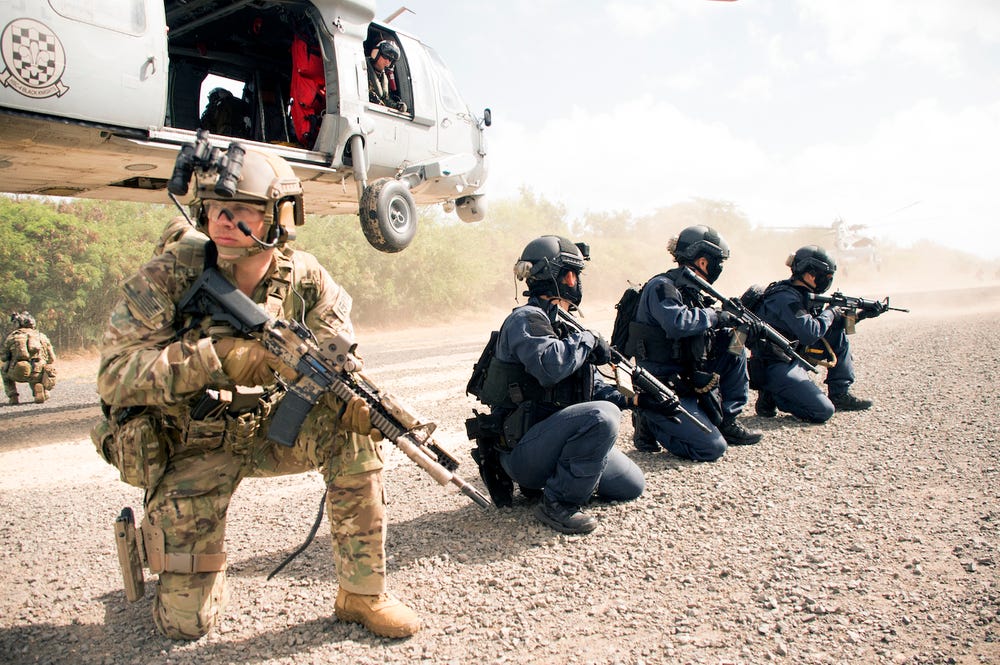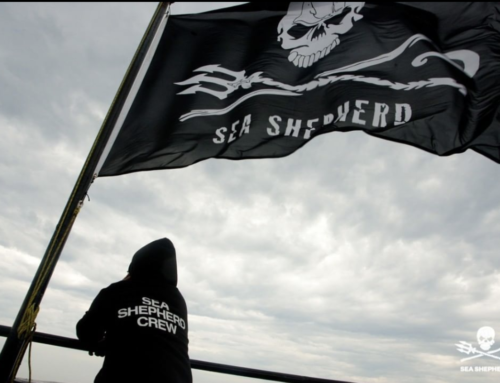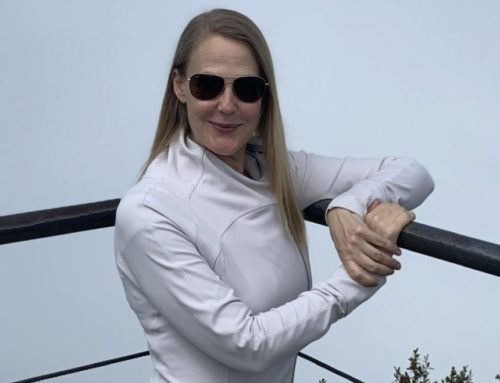This special 2-part series interview with Former Navy Seal Commander Sam Havelock provides rare insight into the world of special operations and how people perform in the face of life threatening challenges, ambiguity and complexity. Sam shares his experiences and discusses the critical role that trust now plays in modern organizations struggling to navigate our topsy turvy world.
Sam Havelock is a remarkable entrepreneur, Strategic Adviser, and Former Navy SEAL commander who has seen and overcome challenges few can imagine. I’ve worked with Sam on various projects over the years and value his unique perspective, clear sighted thinking and profound problem solving skills. Sam started in the Marine Corps and after 5 years transferred to the Navy with the intention to go to basic underwater demolition SEAL training in Coronado, California. By the time he left the Navy in 2012, he had served almost 17 years in the Naval Special Warfare Community – the SEAL teams. With about 17 years in the teams and five in the Marine Corps, Sam served our country for an astonishing 22 years. Thank you for your service Sam. Sam subsequently earned his MBA from Duke and today runs SOFX, a talent recruiting company and publisher of the world’s most widely read special operations daily newsletter.
Listen to the full podcast here, and please subscribe wherever you get your podcasts: Apple Podcasts, Spotify and Stitcher. The following is edited for length and clarity.
Jane Cavalier: Sam, I am delighted to have you here on Overhead Space. Before we begin, can you tell us what it was like to be active duty in the special operations community for so long?
Sam Havelock: In many ways, it was probably the highlight of my life. Often times it’s difficult to reconcile the time spent in the service of a nation with the people you deeply care about and that care deeply about you. I look back fondly on that time and I don’t frankly know exactly what in the future could ever get better than that.
Jane: How many people were under your command?
Sam: When you start out in the SEAL teams as a either an enlisted person or an officer, your level of responsibility with regards to others is somewhat minor, and then it grows in complexity and volume as time marches on. My first job as an assistant officer in charge of a platoon, I was probably directly in charge of eight SEALs in my squad, and then secondarily in charge of the rest of the platoon, about 16 people. Later, I was leading SEAL task units, which can range in size, depending on the number of direct SEALs that are working with you and the number of technical support personnel. It can range anywhere from 50 persons on up. Finally, on my commanding officer tour in California with a team called Special Reconnaissance Team One I led about 600 people, both SEALs and technical representatives that did everything from a variety of different intelligence related roles in concert with SEALs.
Jane: It’s a very unique group of people. What made them easier to manage and also more challenging to manage vs. your average civilian team within a company?
Sam: There’s great interest in the special operations community generated through Hollywood in terms of what makes special operations people tick. Usually you think these people are bigger, stronger, faster, braver and so on. But I have a theory on special operations personnel in terms of the unifying characteristics that I’ve run across, whether it’s SEALs, Green Berets, Rangers, so on.
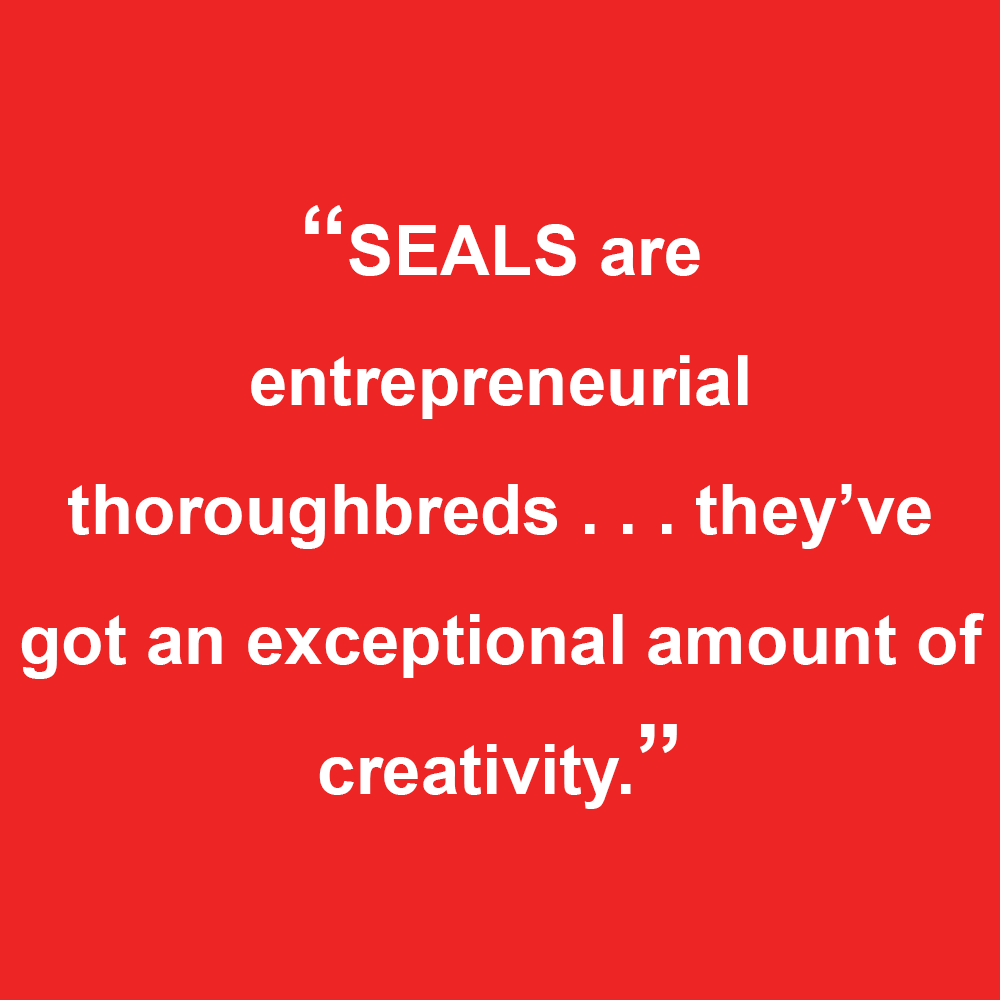
They actually have a much higher entrepreneurial quotient to their personality. They’re extremely comfortable with risk. Leading special operations personnel is akin to trying to lead thoroughbreds, in that they’re extremely high functioning, extremely smart and most often smarter than you.
Jane: What is one of the characteristics that makes them entrepreneurial thoroughbreds?
Sam: They’ve got an exceptional amount of creativity. That’s both a good thing and a bad thing. On the good side is the capability to deploy people into vague, ambiguous and risk-filled situations with very unclear guidance, trusting they will make the decisions required to achieve success – even though we haven’t necessarily defined what success is to them. What the Department of Defense looks for in special operations personnel is the ability to discern right from wrong, make very fast judgements, have an action bias and to be students of the human condition so they can sense on levels that many people cannot. They have a very high emotional intelligence quotient.
Jane: I’m curious about this extra-sensory capability which seems to be fundamental to successful performance. What’s that about?
Sam: It is the ability to read the situation, understand the context, understand danger, understand pressure, and still continue to make decisions even though your life might be under imminent threat. They must still decide, take action, throw the enemy off balance and continue the mission. That’s what is remarkable about the average special operations troop, this ability to be self-directed on the spot, in the target area, under threat. Most people shut down in those situations, but special operations personnel keep barreling through it. The hard part of leading these kinds of people is that you don’t have total control over the situation. You’ve got very smart people who are extremely mission committed. They’re going to make decisions right, wrong or different, to achieve what they view as success. There will be creativity and that’s part of the territory. You need them to be that creative. You need them to make decisions and you just have to be strong in terms of providing the resources they need and the flexibility they require to thrive.
Jane: What happens if someone uses their creativity in a direction that you feel puts the mission in jeopardy? How do you deal with not shutting them down, and redirecting them?
Sam: Ultimately, by the time a SEAL unit deploys oversees, let’s call it “the organism”, we all very much understand the strengths, weaknesses, limitations and possibilities of each of the people in it, and we all self-adjust. What I mean by that is, if I’m the SEAL unit commander and I know that Jimmy might not make the best decisions in certain situations, I ensure that his responsibilities are more in line with where he would thrive. I would not create a situation that would be hard for him to handle. You’re almost like a coach. You really understand how the players like to play ball and you adjust to the challenge. And you basically adjust the way you coach to keep everybody optimized and to minimize the possibility of anything going wrong.
Jane: Can you share a story to illustrate how this works?
Sam: This is actually a great story. This event happened prior to what people know. People have seen the movie, Lone Survivor, and they’re familiar with Red Wings, which was an infamous event in the Afghanistan war. I was the unit commander there probably a little bit prior to that unit coming in. What usually happens when SEAL units come in or replace another unit is there’s a week or two of turnover, where the new SEALs will turn over things with the older SEALS in terms of lessons learned and begin training such as this is the helicopter squadron, let’s go train with them, this is the ammo depot, so on and so forth.
One particular day when I was at the base camp, the new guys that were assigned to us had been put on a mission to go and train with the new helicopter squadron that had also turned up in Bagram Airfield in Afghanistan. While they were up in the air training, I wound up getting a call over the communications network from my next higher commander that said, “Hey, Sam, I need to talk to you really quick. Run down to the command tent, which was a building actually, and get here as fast as you can.” So, I came over there and my commander basically relayed to me a situation. There was an American force that was effectively pinned down in a part of Eastern Afghanistan. They had lost radio communications with this force. They weren’t sure the exact location or disposition of the force, and the only people in the air right now that could get to that American force quickly to try to break the cycle of the enemy’s assault was our new SEALs. Now, these people had never been in combat. There was about six or eight of them on a helicopter doing training with the helicopter squadron. They were the best hope for this American unit that was pinned down. My commander said, “Sam, how comfortable are you that we should send them?” And I told him, “Completely comfortable.” And he said, “Well, then that’s what we’re going to do, because that’s the only hope.” So, basically these new guys who had never seen combat before wound up going to the area. They had no guidance.
We didn’t know exactly where the American unit was, and they proceeded to use their own judgment. They did have a couple of more senior guys, but they had not had any combat experience. They went to the area, picked the highest terrain feature they could get on, and then basically put the pieces together. They found the enemy and wound up essentially liquidating a number of Taliban forces that had sprung the ambush on the American unit. Luckily enough, the American unit didn’t suffer anything other than some minor injuries. Everyone, all American forces along with our guys, safely left.
What was remarkable, was the ability for me to trust that the system had done what it needed to do to deploy those guys into that situation so that everything would come out okay. The training, type of people and quality of character prevailed. Everything that describes how and why America builds special operations forces comes to fruition when you send somebody into a situation where they have no guidance, very limited information, extreme risk, and they’re going to have to make all the decisions on their own. Flying in a Chinook helicopter, into the heat of battle, in an ambiguous situation to go rescue a brother. That was a shining example of what’s possible. Sadly, many of them would perish in Red Wings only a number of weeks after.
Jane: That’s an amazing story. Thank you for sharing it. When people are in those kinds of situations what is their greatest personal challenge?
Sam: It’s being scared and pretending you’re not. It’s as simple as that. It’s being scared, but having to do your level best to pretend you’re not, and to keep your act together. I mean, you’re a human. It’s not that Buds in Coronado deprogrammed out fear. You learn how to continue to deal with yourself and to do your level best to stay constituted under conditions of extreme pressure and threat, and ambiguity. And dealing with yourself is the hardest thing.
Jane: Are there any particular techniques for managing the fear? I mean, what do people do to bring their fear into submission?
Sam: We do extreme compartmentalization. We resort to what is the very next step and focus on the step by step. In combat, your focus draws in like a soda straw. Obviously your adrenaline’s pumping. Auditory things start to change in terms of your ability to really comprehend and process. Suddenly your sense of cognition is just very different than in the normal course. It’s extremely, extremely focused on survival and processing what do I have to do next. What’s the next thing I have to do to ensure survival of the team, survival of myself, prevailing in the mission. We focus in on step by step by step, and then block out in sort of a compartmentalization way, the immense danger being faced.
Jane: What kind of training is provided to help these elite warriors overcome fear and perform?
Sam: It starts with the person. The training systems that the government puts in place allows a certain type of person to get through the system. There are characteristics about my personality or about my upbringing that lend themselves to an ability that’s stronger than others to compartmentalize or to deal with suffering. When I learn of the background of many of the people I’ve served with, often we share similar backgrounds. Maybe we had certain attributes of our childhood or of our upbringing that were difficult. And that informs an ability to be able to compartmentalize or to put any kind of physical pain or suffering off to the left or off to the right and continue driving towards whatever your objectives are.
But clearly, the training itself, it prepares you. It prepares you to continue making decisions, and the right decisions generally, with increasing levels of stress. They teach you to focus on the step by step and what you need to do to make critical decisions under conditions of stress. It becomes like a muscle and you exercise it. They train you do it again and again and again.
In Part 2, Sam talks about the role that trust plays in confronting the challenges of our new world, and the need for companies to employ individuals of strong moral character who have the ability to navigate ambiguity, complexity and uncertainty to achieve success.
Listen to the full podcast here, and please subscribe wherever you get your podcasts: Apple Podcasts, Spotify and Stitcher.
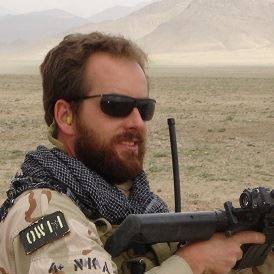
Subscribe for FREE to the world’s most widely read special operations newsletter produced by Sam’s company SOFX right here: https://mailchi.mp/sofx/subscribetoday
Contact Sam Havelock directly: [email protected]
Enjoying Overhead Space? There’s More to Love.
Subscribe to Overhead Space to receive mind-expanding editorials and interviews to help your organization reach its full potential.
